
|
Section from the shelf
break
down to the 2500m contour.
35-40 knots winds,
ship speed 12 knots going east, 8 knots on heading south..
Lost tracking going down hill. Could only maintain
tracking by forcing longest pulse length (Extra Deep Mode) and manually
setting depth gates based on 3.5 kHz record. Ridiculously
small and poor quality swath so went to bed...
Deep water (900m) MVP dip at eastern end of line. On recommencing the
survey, was able to track well in a short lull in the sea using Very
DeepMode. But within 2 hours was forced back to using Extra Deep mode. |
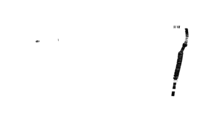
|

|
|
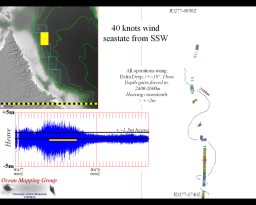 |
Northern section along
the
2500m
contour. 40 knots of wind. Ship speed 8 knots...
Confusion about what the depth range was likely to be for the first
section. On forcing the gates to within ~+/-200m of the bottom,
managed to start tracking, but only using Extra Deep Mode with
resulting
narrow swath and poor resolution.
Litttle, if any useful data, ridiculously narrow swath (Extra Deep mode
is primarily designed for lower seastates but in far deeper waters
(> 3500m).
Backscatter data of little use, clearly dominated by bubble wash down
and signal to noise problems,
|
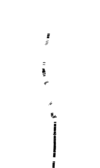
|
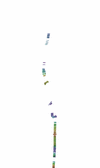
|
|
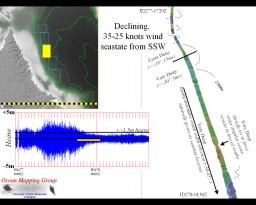 |
Central Section along the
2500m
contour. Winds dropping ~ 35-25 knots.
Increasing bottom tracking quality. Switched to Very Deep Mode. Little
improvement at first in swath width but much better resolution. Let the
sonar system choose its own angular sector. As seastate moderated the
sector
naturally opened up. It is very clear that it is best to let the sonar
choose the achievable swath width as it continually optimally
redistributes the 135 beams
over the maximum realistically achievable sector. An attempt to force a
wider swath was met with a
reduction in the total swath width.
Clear from the heave data that the sea was dropping and the swath
gradually opened up. Nevertheless, whilst bathymetry is now usable, it
is apparent that there is significant bubble wash-down, rendering the
backscatter data unusable. Note that heavily manual editing has been
performed on this section of data.
|
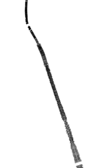
|
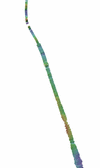
|
|
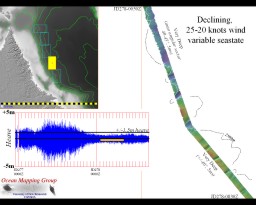 |
Southern Section along
the
2500m contour. Winds continue dropping 25-20 knots.
Tracking markedly improving. A stable 4km swath now. Operating in Very
Deep-mode, one can note from the backscatter that the incidences of
bubble wash down are
decreasing by the decrease in frequency of low backscatter striping in
the imagery. The heave signal shows that the seas have descended far
more rapidly, but that there must still be a lot of bubbles in the
upper layer, masking the array.
The data cleaning requirements are now much less extreme and the
backscatter data becomes acceptable by the end of the segment.
|
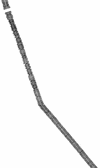
|
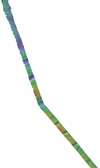
|
|
 |
Section up Makkovik
Margin-
Winds 20-15 knots.
Excellent tracking using the full +/-52 deg. of the Very Deep Mode
when shallower than 2000m. Tried switching to Deep Mode as same
pulse length to allow a wider sector. But clearly another factor as
reduced swath width initially (broader receiver bandwidth perhaps ?).
Switched to Deep mode permanently at the 1500m contour, and to Medium
mode at the 700m contour.
Under these conditions, the swath widths achieved match closely the
Simrad predictions for a muddy seabed, indicating that the attenuation
due to the ice windows is not a particularily critical factor. Note
also that the vessel has increased speed up to 12 knots for this
up-margin section.
|
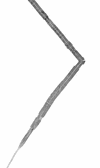
|
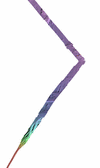
|
|
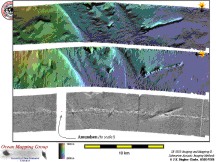 |
Example
data from
2000-2200m using Very Deep Mode.
A stable 5000m swath is being acquired, with little apparent loss of
resolution from nadir to the far range. Excellent depiction of valley
flow morphology and detail on the ridge-like feature. Note that the
backscatter data has no evidence of any bubble wash down events.
50m contours superimposed.
|
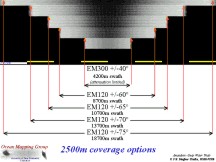
|
Relative
Coverage, Attenuation limited EM300 v. EM120
At 2500m, the EM300 swath is clearly attenuation limited with no more
than a +/- 40 degree swath available. It is worth contrasting with the
swath width that could be provided using a 12 kHz EM120. At these
depths, the EM120 could potentially provide a +/- 75 degree swath.
Exactly how wide a swath width could be used to achieve the required
data accuracy, however, depends on external ancillary error sources
including motion sensor accuracy and alignment and water column control.
Based on other deep water surveys, a realistic maximum sector used by a
12 kHz system would be ~ +/-60 or +/- 65 ( an increase in
coverage of more than a factor of 2.0 to 2.5 x). By comparison, the US
UNCLOS surveys are being performed using three different 12 kHz sonars:
- Arctic - Seabeam 2100 +/- 60 deg.
- Atlantic - EM121 +/- 60 deg
- Pacific - RESON 8150 +/- 45 deg
|
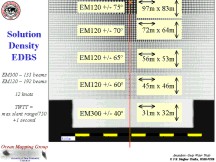 |
Relative
sounding density, EM300 v. EM120
Whilst a 12 kHz system would clearly provide a greater mapping
(coverage) efficiency, it should be borne in mind that a wider swath
sector would require both :
- a wider spaced across track beam density (beams have
to spread over a wider sector) and
- a wider along track beam density (longer two-way travel
time to outermost beam)
In this case, the data density for an EM300 is between 2 and 4 time
higher soundings per unit area. Thus, while it will achieve only a
fraction of the coverage, it should achieve (under low seastate
conditions) a significantly greater spatial resolution than the wider
swath 12 kHz systems.
|
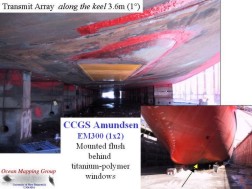
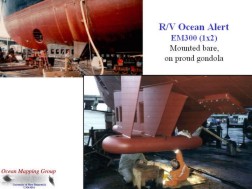
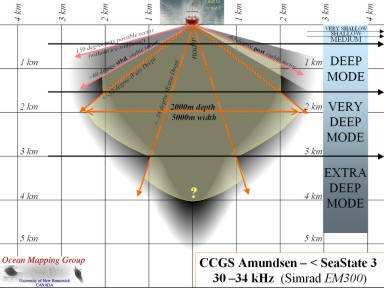 Between
the 2nd and 7th of October 2004, CCGS Amundsen steamed in transit from
Ungava Bay to Quebec City, via the Labrador Sea. The vessel was
deliberately diverted to an offshore route, roughly along the 2500m
contour in order assess the bottom tracking capability of the
hull-mounted Simrad EM300 30 kHz multibeam sonar. During the period in
deep water, the vessel steamed through a 40 knot gale but the more
southerly section took place with winds as light as 15 knots.
Between
the 2nd and 7th of October 2004, CCGS Amundsen steamed in transit from
Ungava Bay to Quebec City, via the Labrador Sea. The vessel was
deliberately diverted to an offshore route, roughly along the 2500m
contour in order assess the bottom tracking capability of the
hull-mounted Simrad EM300 30 kHz multibeam sonar. During the period in
deep water, the vessel steamed through a 40 knot gale but the more
southerly section took place with winds as light as 15 knots. 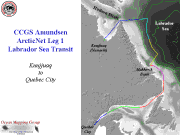 From
about 60.75 N until 56.60 N the Amundsen approximately tracked the
2500m contour (as derived from ETOPO5). The aim was to assess the
bottom tracking performance of the flush-mounted, ice-reinforced EM300
system on the Amundsen under open ocean conditions. Whilst the data
could be useful towards assessing the approximate location of the 2500m
contour (and all the data is being made publicly available), no
external funding
was provided for these trials and thus the cost of
the diverted transit was borne by
the ArcticNet research program.
From
about 60.75 N until 56.60 N the Amundsen approximately tracked the
2500m contour (as derived from ETOPO5). The aim was to assess the
bottom tracking performance of the flush-mounted, ice-reinforced EM300
system on the Amundsen under open ocean conditions. Whilst the data
could be useful towards assessing the approximate location of the 2500m
contour (and all the data is being made publicly available), no
external funding
was provided for these trials and thus the cost of
the diverted transit was borne by
the ArcticNet research program.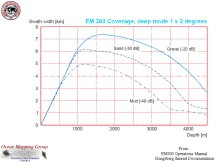 The
main thing to note is that any EM300 is generally attenuation
limited,even in low seastates at depths greater than ~ 1000m. Due to
the ice-reinforced windows, steering beyond ~ 65 degrees, relative to
the receive array is not possible anyway. As the array is tilted to
port, standardly a sector of +(stbd) 60 degrees and -(port) 65 degrees
is acquired in water depths less than 1000m. At depths beyond ~
800m, there are three ping modes:
The
main thing to note is that any EM300 is generally attenuation
limited,even in low seastates at depths greater than ~ 1000m. Due to
the ice-reinforced windows, steering beyond ~ 65 degrees, relative to
the receive array is not possible anyway. As the array is tilted to
port, standardly a sector of +(stbd) 60 degrees and -(port) 65 degrees
is acquired in water depths less than 1000m. At depths beyond ~
800m, there are three ping modes:
















